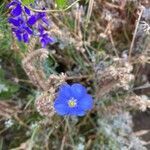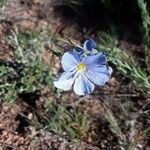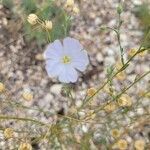A herb. It keeps growing from year to year. It grows 70-80 cm tall. It branches from the base. The leaves are alternate and narrowly sword shaped. They are 1-2 cm long. The flowers are pale blue or sometimes white. The fruit are a rounded pod or capsule. It contains 2 large seeds.



